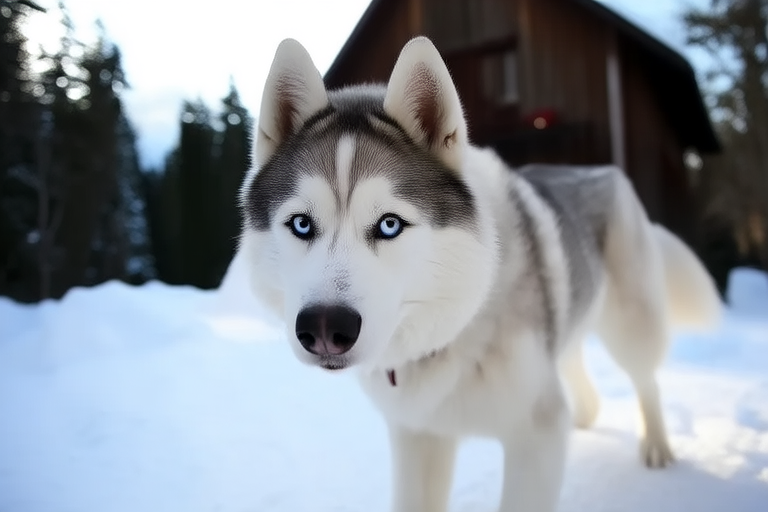From Tundra to Couch: The Ultimate Guide to Raising a Siberian Husky
Welcome to your comprehensive guide on raising a Siberian Husky! This ancient breed, originally from the cold regions of Siberia, has captured the hearts of many with its striking appearance and unique personality. From understanding their origins and characteristics to providing proper care and training, this guide will walk you through everything you need to know about bringing a Siberian Husky into your home.
Understanding the Breed’s Origins and Characteristics
Siberian Huskies have a rich history dating back thousands of years. They were bred by the Chukchi people of northeastern Asia to pull sleds over long distances in harsh winter conditions. Their resilience and endurance made them invaluable companions in these challenging environments.
These dogs are known for their striking blue or multi-colored eyes, thick double coats, and distinctive wolf-like appearance. They are highly intelligent, independent, and social animals. Siberian Huskies are also renowned for their strong prey drive, which can make them less suitable for homes with smaller pets.
Essential Dietary Needs
Feeding a Siberian Husky requires careful consideration to ensure they receive the nutrients necessary for optimal health. A high-quality diet rich in protein and fat is crucial, as these elements help maintain their energy levels and muscle mass. It’s important to choose a food that is specifically formulated for large breeds and contains the right balance of vitamins and minerals.
Avoid feeding table scraps and limit treats to prevent obesity. Consult with your veterinarian to determine the appropriate portion sizes based on your dog’s age, weight, and activity level. Regular monitoring of your pet’s weight and body condition score will help you adjust their diet as needed.
Exercise Requirements
Siberian Huskies are an active breed that thrives on physical activity. They require regular exercise to stay healthy and happy. Daily walks or runs, along with opportunities for play, are essential. These dogs have a natural instinct to run and explore, so providing them with ample space to move freely is beneficial.
Consider enrolling your Siberian Husky in activities such as agility training or mushing (sled pulling) to engage their minds and bodies. Mental stimulation is just as important as physical exercise, so incorporate puzzle toys and interactive games into their routine.
Grooming Tips
The thick coat of a Siberian Husky requires regular grooming to keep it in top condition. Brushing them at least twice a week helps remove loose hair and prevents matting. During shedding seasons, daily brushing may be necessary.
Bathing should be done only when absolutely necessary, as frequent bathing can strip the coat of its natural oils. Use a gentle shampoo and rinse thoroughly to avoid skin irritation. Additionally, check their ears weekly for signs of infection or debris, and clean them if needed.
Health Considerations
Like all breeds, Siberian Huskies are prone to certain health issues. Common conditions include hip dysplasia, cataracts, and progressive retinal atrophy. Regular veterinary check-ups and genetic testing can help identify potential problems early.
Vaccinations and preventive care, such as flea and tick control, are vital to maintaining good health. Providing a balanced diet and ensuring they get enough exercise can also contribute to their well-being. Early detection and treatment of any health concerns are key to a long, healthy life.
Training Techniques
Training a Siberian Husky requires patience and consistency. These dogs are intelligent but can be stubborn at times, making positive reinforcement methods particularly effective. Reward good behavior with treats, praise, and affection to encourage repetition.
Begin training sessions when your dog is young and keep them short and fun. Focus on basic commands like sit, stay, come, and heel. Socialization is equally important; expose your Siberian Husky to various people, animals, and environments from an early age to promote well-rounded behavior.
Advice for Integrating Siberian Huskies into Family Life
Incorporating a Siberian Husky into your family can be rewarding but also challenging. These dogs are loyal and loving but may exhibit behaviors that require management. Establish clear rules and boundaries early on to set expectations.
Create a safe environment where your dog feels secure and comfortable. Provide them with a designated sleeping area and plenty of toys to keep them occupied. Encourage bonding through shared activities and spending quality time together.
Remember, every dog is different, and what works for one might not work for another. Be patient and adaptable as you navigate the joys and challenges of raising a Siberian Husky.
Conclusion
Raising a Siberian Husky is a rewarding experience that comes with its own set of responsibilities. By understanding their origins and characteristics, meeting their dietary and exercise needs, practicing proper grooming, addressing health concerns, employing effective training techniques, and fostering a loving home environment, you can ensure your Siberian Husky lives a fulfilling and happy life.
With dedication and love, you’ll form a strong bond with your furry companion, creating lasting memories that will warm your heart for years to come.
